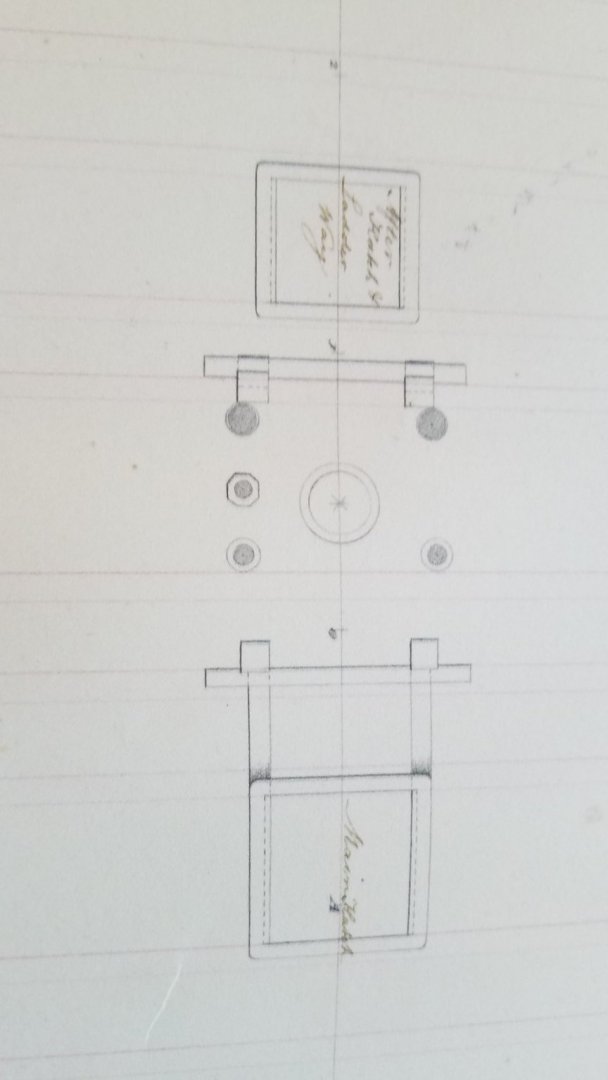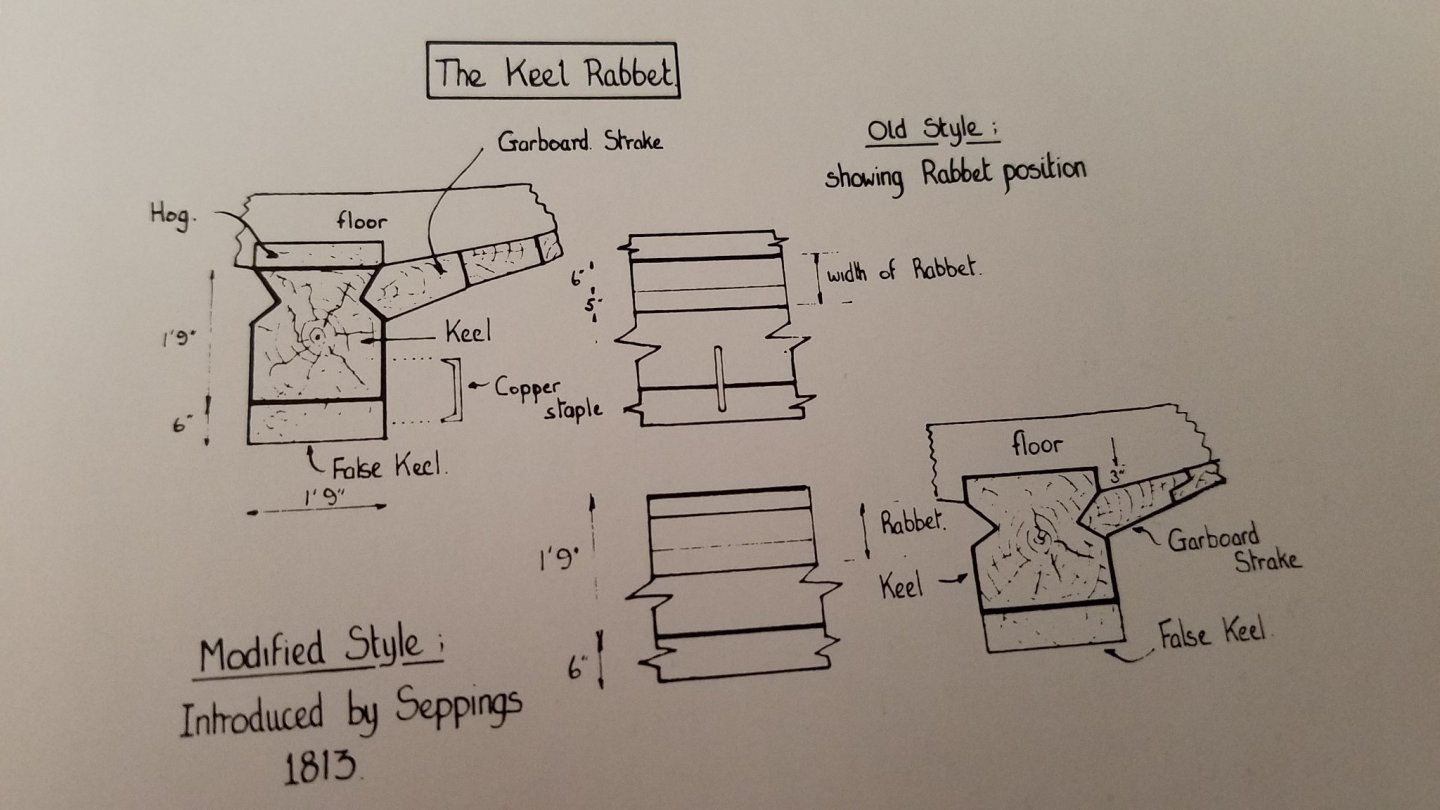
barkeater
NRG Member-
Posts
404 -
Joined
-
Last visited
Content Type
Profiles
Forums
Gallery
Events
Everything posted by barkeater
-
Interesting that you are starting to get more background info on the model.
- 95 replies
-
- POW
- Bone model
-
(and 2 more)
Tagged with:
-
Enjoying your work. Is there any way to use bone instead of ivory?
- 95 replies
-
- POW
- Bone model
-
(and 2 more)
Tagged with:
-
Boat looks great. Looking forward to seeing your progression with the project.
- 95 replies
-
- POW
- Bone model
-
(and 2 more)
Tagged with:
-
Your paint job came out nice.
- 81 replies
-
- Bluejacket Shipcrafters
- Yankee Hero
-
(and 1 more)
Tagged with:
-
Wood filer
barkeater replied to Andre Gotty's topic in Building, Framing, Planking and plating a ships hull and deck
I use Elmer's carpenter wood glue. I take the piece of wood I'm matching and use a file to make saw dust onto a piece of wax paper. Then I take a tooth pick, dip it into the glue and roll it around in the dust. I then pack this into the gap with the toothpick. Then I smooth out the surface with my finger or a scalpel blade. Let it dry and sand it smooth. Rich -
Wow, this is a challenge to say the least. Interested to see how you will do it.
- 95 replies
-
- POW
- Bone model
-
(and 2 more)
Tagged with:
-
Wood filer
barkeater replied to Andre Gotty's topic in Building, Framing, Planking and plating a ships hull and deck
I've make my own wood filler using saw dust and PVA all the time. It works great. I recommend this method over commercial fillers anywhere the area will be seen on the finished model. Because it matches the color of the wood you are using it blends right in and hides any gap well. I do use commercial filler for my first planking because this will not be seen and it is easier to just get it out of a can or tube. Rich -
Thank you for all your replies. The paired pumps on the side view "as refit" are different for and aft compared to one another and are different from the drawings "as taken". The "as taken" pumps are identical to one another. The unpaired one is seen only on the "as fit" deck plans. Instead of a chain pump or elm tree pump for draining the well, I think it is a hand pump for deck cleaning fed from a cistern. The following is from Lavery in "Arming and Fitting of English Ships of War 1600-1815" " A new system of supplying water for washing decks was introduced in 1770. The dockyards were ordered to 'fix a cistern in the well on board all three- and two=decked ships building, repairing and refitting" The cistern was fed with clean sea water from both sides of the vessel via copper pipe ensuring water to draw from if the ship was under sail and heeling over. The time frame fits as does the unpaired configuration. I'm going with it. Thanks again to all.
-
The 38 gun Unite 1796 refit which I'm building was not the Surprise. She was taken as the L'Unite' and renamed Unite' after the refit. She was briefly commanded by Nelson in 1801. The plans clearly show that the pumps fore and aft the mainmast are of distinctly different types with the forward pumps being elm pumps and those aft chain pumps. I'm still lefty with the unpaired structure. It would be odd to have an unpaired chain pump or elm pump. Also the picture above of the Surprise shows carronades and on the gun deck. The Unite' carried 12 pounders on her gun deck. She did carry 4 32 pound carronades but this was on the forecastle.
-
This is a view of the upper deck or gun deck Unite 1796 refit. The paired rounded structures aft and forward of the main mast looking at the side view (not uploaded) are chain pumps and elm pumps respectively adjacent to the main mast. My question is what is the unpaired octagonal structure. This is not shown on the lateral as the pumps are. It is also indicated on the lower deck in the floor plan but also not the lateral view. It could be for the cable compressor however this was usually situated on the undersurface of the main hatch. The quarterdeck shows paired scuttles above it and the shot locker would be adjacent to it on the orlop deck. Could it be a pass through for shot up through the lower and upper decks? I doubt it but I just can't figure it out with a degree of certainty as to what it represents on the plans. Ideas?
-
You want to have as near to a perfect hull before your second planking as possible. We all make mistakes or have difficulties. Use filler to smooth out any imperfections but be aware that when you glue the second planking that it will not adhere as well to filler/paste/putty as to wood. So don't go overboard. No pun intended. It is always better to fix problems first before you continue on as you will be fighting the same problem again. Rich
-
One constant about this hobby is that there are always unexpected problems which arise which need to be solved.
- 81 replies
-
- Bluejacket Shipcrafters
- Yankee Hero
-
(and 1 more)
Tagged with:
-
Paint or blackening
barkeater replied to Bill Hill's topic in Painting, finishing and weathering products and techniques
You could use Brass Black sold on Amazon. I used it and it appears to be the same stuff. Rich -
Paint or blackening
barkeater replied to Bill Hill's topic in Painting, finishing and weathering products and techniques
It's a matter of opinion and personal preference. I like the look of blackening compared to painting. I also put on Dullcote over the blackening which gives a duller finish. I have used black paint with good results as well. If painting do a test to make sure you like the color. All black paint is not the same color or finish. I think painting is easier but blackening looks more realistic in my opinion. -
Looking good. I don't about system rig or jig. There are books out there on rigging but the ones I know of are for three masters. If you are talking about a system or methodology for rigging then think about it this way. Start with all of your central or midline rigging then move outward to starboard and port. On the picture in your manual that would be the lines in black which they presumably did in black to indicate the standing rigging instead of running rigging. Also start at one end and work towards the other. I start with the bow and work to the stern. So I would start with the bow working my central rigging to the stern and then go back to the bow and work those lines which are tied to the sides of the ship both port and starboard. These lines should be paired both port and starboard and do both pairs at the same time which will give you good side to side tension on your mast.
- 81 replies
-
- Bluejacket Shipcrafters
- Yankee Hero
-
(and 1 more)
Tagged with:
-
If the wood between A and C is part of the rising wood, then your frame would sit on top of the rising wood giving the horizontal line in the drawing and it then matches up with C being your point of contact. Everything below C is rising wood and keel. This is just my opinion and others may see it differently.
-
3d printing crew figures
barkeater replied to highlanderburial's topic in 3D-Printing and Laser-Cutting.
I don't want to get into 3D printing but I can't find any sailor figures in 1/48 scale which is what I do. Seems to me that someone could make a nice side business in making 3D figures in the various scales we work in. I'm sure that there are plenty of builders out there who would be happy to buy some to add to their build. Checked out Hero Forge but they don't offer the kinds of figures I want for my builds.
About us
Modelshipworld - Advancing Ship Modeling through Research
SSL Secured
Your security is important for us so this Website is SSL-Secured
NRG Mailing Address
Nautical Research Guild
237 South Lincoln Street
Westmont IL, 60559-1917
Model Ship World ® and the MSW logo are Registered Trademarks, and belong to the Nautical Research Guild (United States Patent and Trademark Office: No. 6,929,264 & No. 6,929,274, registered Dec. 20, 2022)
Helpful Links
About the NRG
If you enjoy building ship models that are historically accurate as well as beautiful, then The Nautical Research Guild (NRG) is just right for you.
The Guild is a non-profit educational organization whose mission is to “Advance Ship Modeling Through Research”. We provide support to our members in their efforts to raise the quality of their model ships.
The Nautical Research Guild has published our world-renowned quarterly magazine, The Nautical Research Journal, since 1955. The pages of the Journal are full of articles by accomplished ship modelers who show you how they create those exquisite details on their models, and by maritime historians who show you the correct details to build. The Journal is available in both print and digital editions. Go to the NRG web site (www.thenrg.org) to download a complimentary digital copy of the Journal. The NRG also publishes plan sets, books and compilations of back issues of the Journal and the former Ships in Scale and Model Ship Builder magazines.



